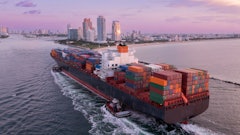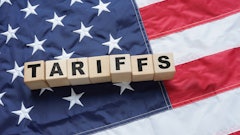
It doesn’t take a 250% tariff to destabilize pharmaceutical supply chains. Most are already under strain, and any disruption—geopolitical, economic, or environmental—could push them to the brink, impacting the availability of critical medications.
Ninety-one percent of U.S. prescriptions are filled with generic drugs, yet most of the active pharmaceutical ingredients (APIs) for these medications come from just two countries: China and India. Even drugs labeled “Made in the USA” often rely on foreign-sourced components. Add in strict regulations, long production lead times, and recurring shortages, and the system has little room to absorb shocks.
That fragility matters because, unlike other industries, a supply chain disruption for pharmaceuticals isn’t just an operational headache. It threatens patient access to essential medicines.
Tariffs are only the latest disruption chief risk officers (CROs) must confront. But they’re part of a broader pattern of geopolitical tensions – trade wars, sanctions, cyber risks – that expose just how vulnerable global supply chains have become. The bigger truth is pharmaceutical supply chains need better resilience strategies capable of withstanding today’s threats and the next inevitable shock.
The chain reaction that turns trade policy into a care crisis
The United States already pays more than most nations for branded drugs, sometimes three times as much. And while generics have historically provided relief, tariffs threaten to erase that balance as well.
Tariffs don’t just raise costs on paper. They ripple through the entire healthcare system. Hospitals may cut formularies. Pharmacies may restrict inventory. Patients could face higher costs or fewer options.
And when generics become unaffordable or unavailable, the risks escalate quickly. Patients start skipping doses, rationing pills, or delaying treatment. These choices worsen health outcomes, add strain to providers, and increase costs across the system. What begins as a trade policy ripple can quickly become a public health emergency, leaving CROs wondering where to go from here.
Pivoting won’t happen overnight
Reshoring production or relocating to lower-tariff regions sounds like an attractive option, but it isn’t quick or simple. Domestic operations require Food and Drug Administration (FDA) approvals, specialized facilities, and skilled labor. Even shifting to countries like Ireland means requalifying suppliers, investing in new infrastructure, and redesigning logistics networks.
And resilience isn’t just an operational exercise. It demands cross-functional alignment, long-term modeling, and leadership buy-in. In low-margin generics, even well-reasoned strategies often struggle to gain traction without a clear business case.
That’s why tariffs create such a difficult balancing act. Whether organizations absorb the immediate hit or invest in reshoring, higher prices almost always follow. One way or another, consumers bear the cost.
And tariffs aren’t the only concern. Sanctions, wars, embargoes, and cyberattacks can all interrupt access just as quickly. Getting ahead of these barriers, before disruption forces the issue, remains one of the toughest challenges CROs face.
How CROs can build resilience now
Disruption is inevitable in pharma. But with the right mix of near-term actions and long-term strategies, organizations can protect drug access, stabilize costs, and maintain continuity.
To get there, resilience planning works best in stages: address immediate sourcing gaps and pricing adjustments first, then evaluate product viability if costs rise further. Finally reduce concentration risk by building alternative supplier networks, including onshore options, to shift from reactive fixes to proactive resilience.
Here’s how CROs can put this approach into practice:
Immediate actions to steady supply
● Map risk across the supply chain. Trace supplier networks in detail, down to API sources. Model scenarios for tariff hikes, shipping delays, or raw material shortages. Use the insights to pinpoint vulnerabilities and prioritize investments to reduce concentration risk.
● Sharpen forecasting and decision intelligence. Strengthen coordination between demand planning, procurement, and production. Apply predictive models and AI tools to anticipate shortages and adjust inventory before they spiral into crises.
● Accelerate regulatory readiness and risk monitoring. Regulatory delays can stall even the best backup plans. Engage agencies early to prequalify alternative suppliers or facilities. Pair this with a strong third-party risk management (TPRM) program to flag geopolitical, cyber, and operational risks before they hit supply.
Longer-term strategies for resilience
● Diversify sourcing with full visibility. Spreading exposure across suppliers and regions is essential, but diversification without transparency just shifts risk. Visibility into API and raw material suppliers ensures diversification works.
● Pilot and scale alternatives. Small-batch pilots in domestic or nearshore facilities validate feasibility before scaling. Having tested capacity in reserve enables faster pivots when offshore sourcing becomes unstable.
● Work closely with suppliers to share costs. Tariffs and other disruptions create sudden price shocks, but buyers don’t have to shoulder them alone. Building stronger partnerships with suppliers can open room for negotiation, with some suppliers absorbing part of the costs to protect supply continuity and soften the impact on patients.
The next shock is coming and readiness can’t wait
Tariffs are only the latest hurdle, but they won’t be the last supply chain shock.
Organizations that diversify sourcing, model risk exposure, build adaptive capacity, and deepen oversight will be far better positioned to protect access and control costs when the next disruption strikes.
A practical starting point: audit the top five generics. What happens if the primary supplier fails? How quickly can an alternative come online? That gap, not the tariff forecast, is the real risk.
CROs who engage executives early, align with supply chain partners, and turn risk insights into readiness will prevent cracks from becoming breaking points. Resilience in pharma isn’t just about protecting supply chains. It’s about protecting the patients who rely on them, regardless of the geopolitical landscape.
















![Pros To Know 2026 [color]](https://img.sdcexec.com/mindful/acbm/workspaces/default/uploads/2025/08/prostoknow-2026-color.mduFvhpgMk.png?ar=16%3A9&auto=format%2Ccompress&bg=fff&fill-color=fff&fit=fill&h=135&q=70&w=240)
